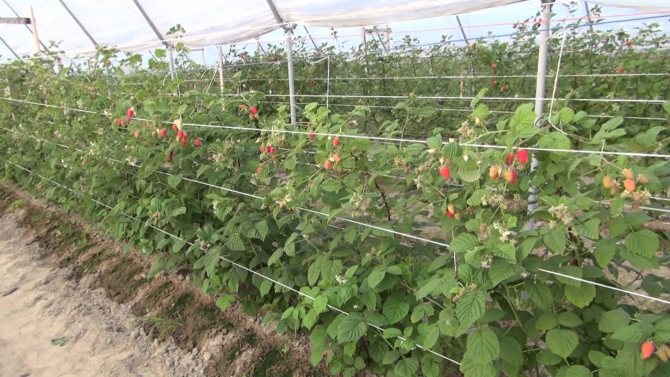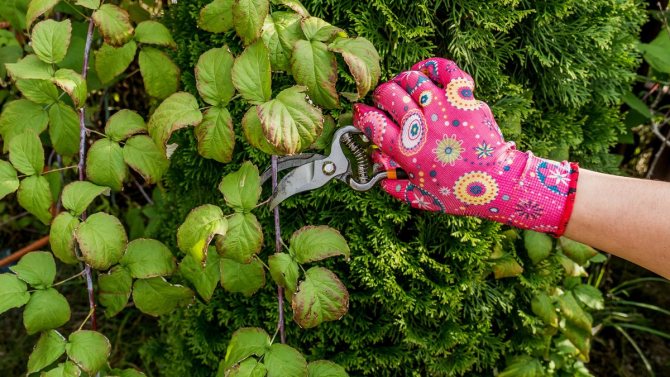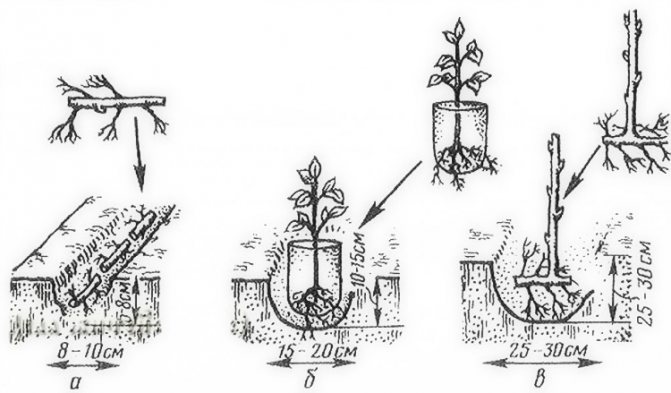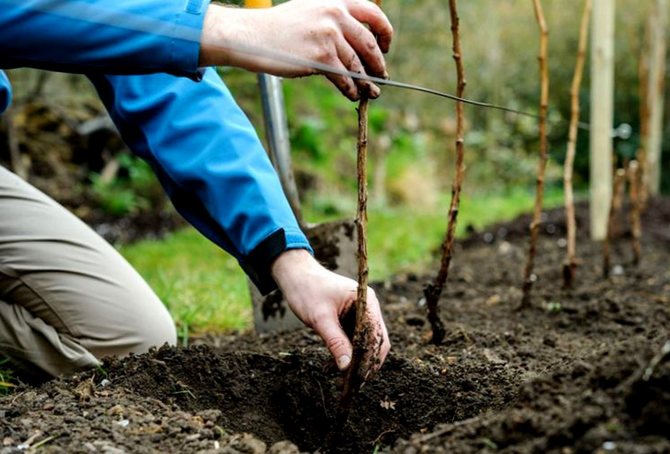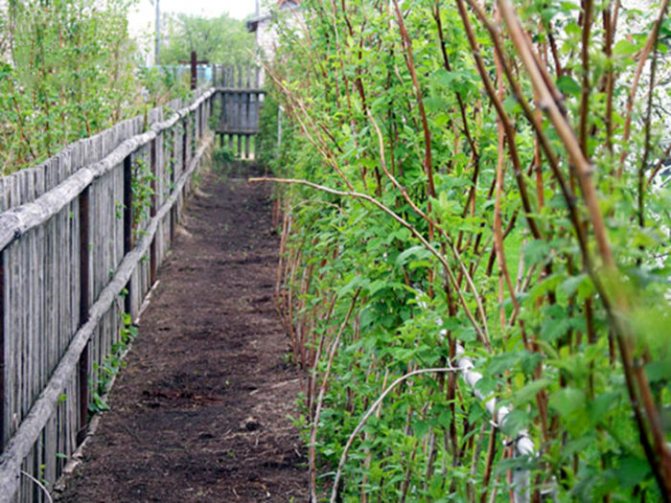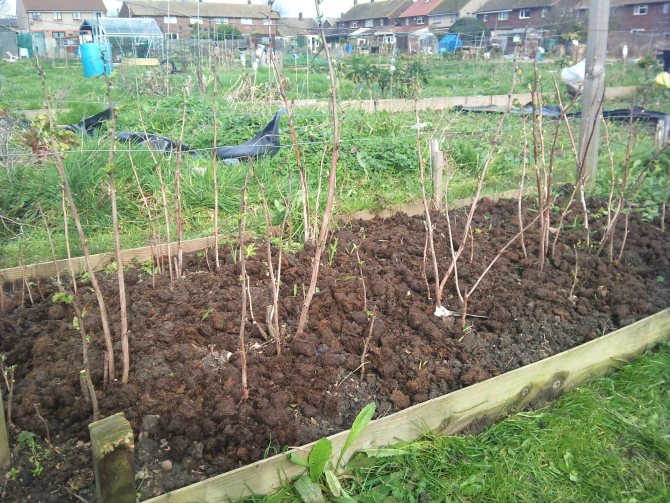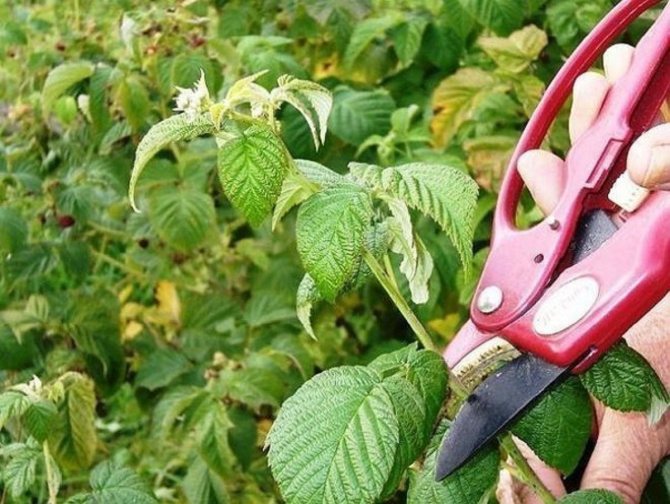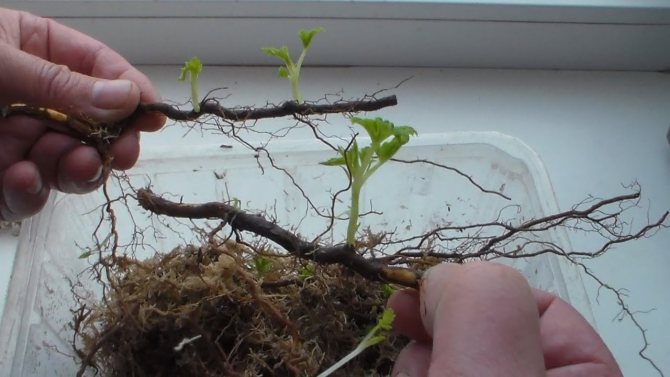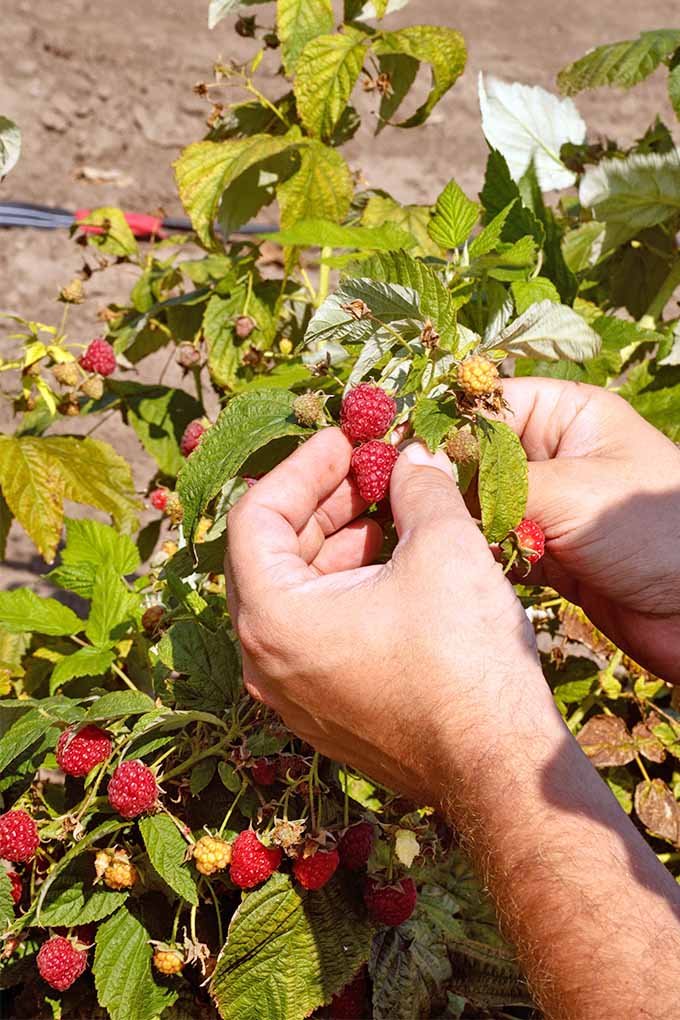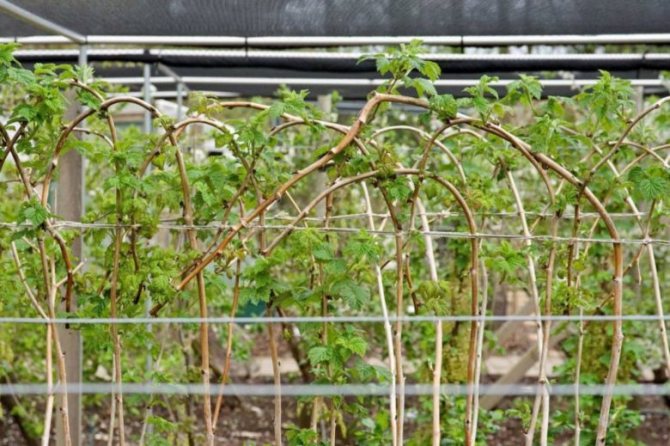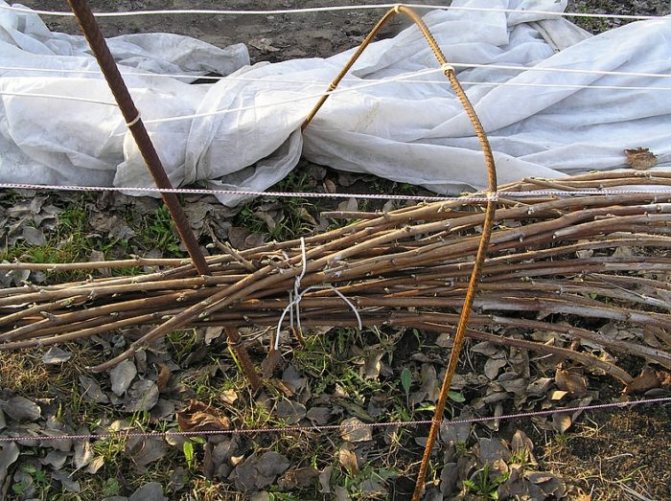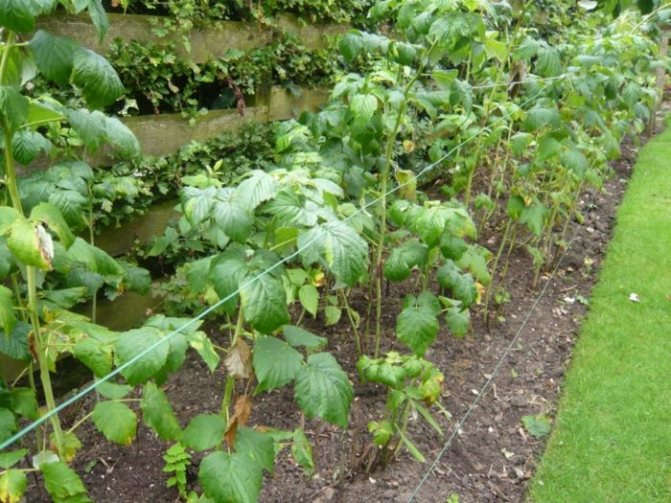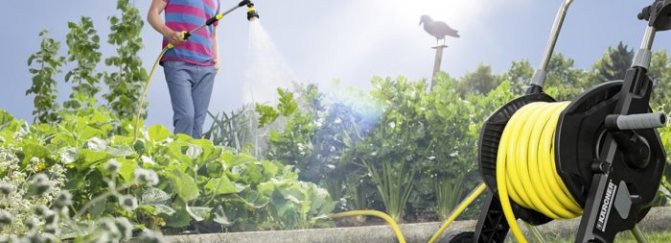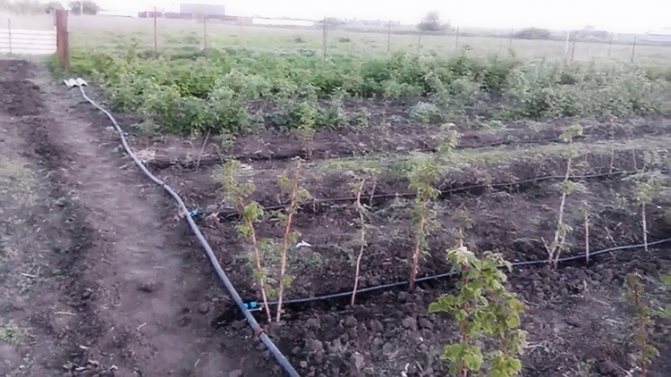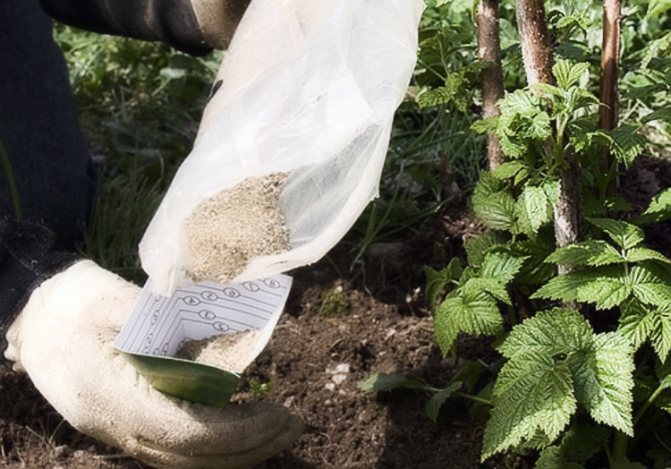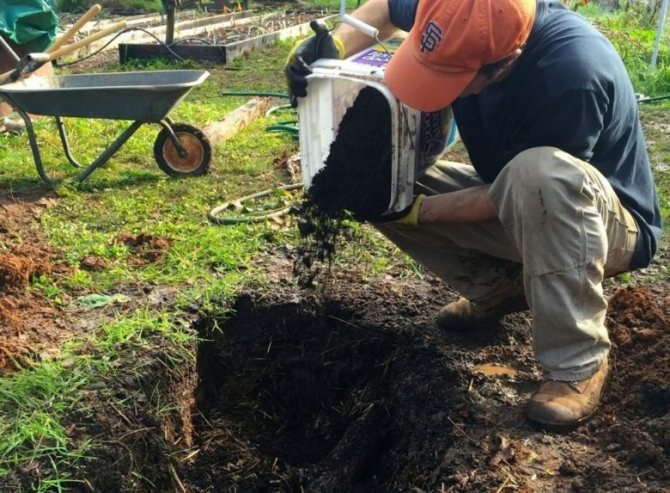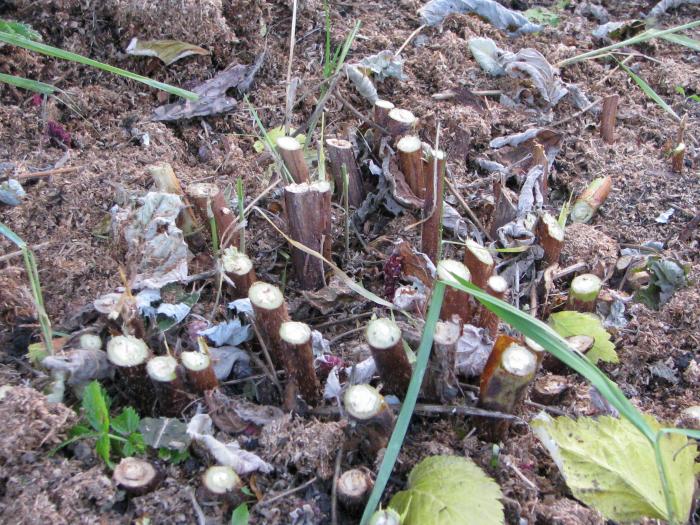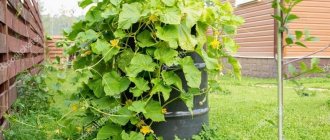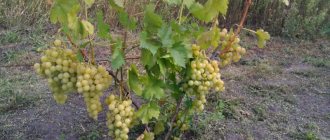It is difficult to find a gardener who does not grow tasty and very healthy raspberries on his plot. Well, if you are just planning to plant this fragrant berry, then this article is for you. Below, we will find out all the details of growing raspberry bushes and understand all the nuances of caring for this plant. Growing raspberries in the country is a rather laborious process, but at the same time very exciting, and most importantly, with proper care for this wonderful plant, you can get a generous harvest.
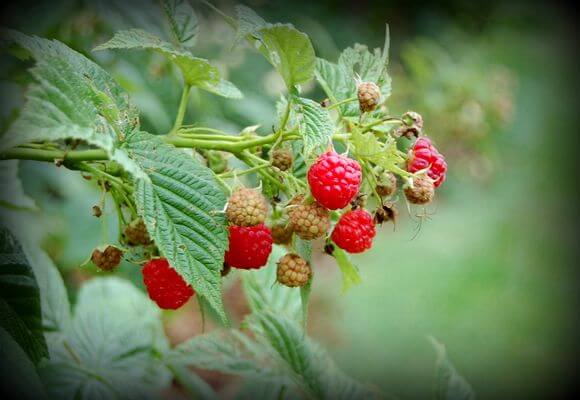
Choosing a landing site
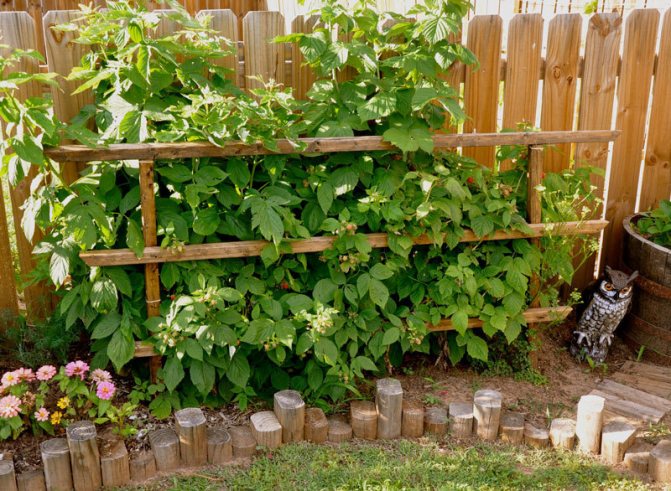

A suitable place for raspberries is sheltered from the gusts of wind and illuminated by the sun throughout the day.
The landing site is of great importance. The location of the raspberry will determine the yield and taste of raspberries. When choosing a site, you must adhere to the following recommendations:
- The place should be well lit by the sun... Avoid the neighborhood with tall trees and do not plant raspberries near buildings.
- Care should be taken to protect against northerly winds and strong drafts. Since gusty winds can damage the bushes. Many gardeners prefer to plant raspberries along the fence, and this is a smart decision. Experts recommend choosing the southern or southwestern part of the fence.
- It is of great importance that before that grew on the site... Do not plant raspberries after strawberries, potatoes or tomatoes. Since these crops greatly deplete the soil. It will be correct to plant it after the rose hips, currants or gooseberries. Such a neighborhood is able to protect the raspberry from such a disease as verticillosis.
- It is important to remember that raspberries do not like excess moisture.... When choosing a landing site, you need to take into account the distance of groundwater. Optimal is 1-1.2 meters.
- Raspberries do not thrive in acidic soil... Therefore, it is best to plant it in soil, the acidity of which is in the range of pH 5.5–6.5.
Soil preparation
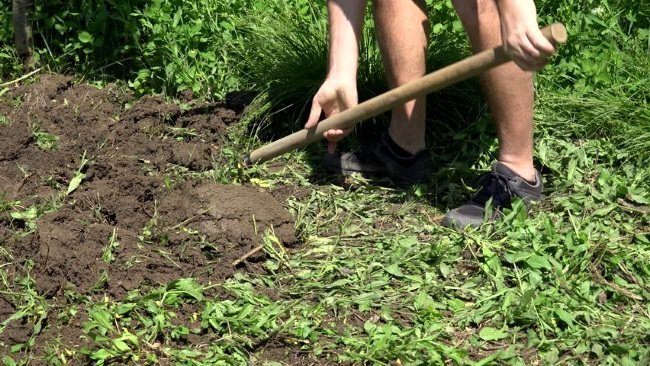

Embedding green manure in the soil at the site of the future raspberry tree.
As you know, raspberries can be planted both in autumn and spring. Therefore, soil preparation will directly depend on the planting season.
Autumn planting
First of all, you need to dig up the site. Next, the soil is fertilized. To do this, mix:
- from 10 to 30 kg of manure;
- 60-80 grams of superphosphate;
- about 50 grams of potassium sulfate.
This mixture is introduced in a proportion of one square meter. In cases where the soil is too clayey, the amount of manure is increased, and if it is peaty, then experts recommend adding additional sand to one square meter of 4 buckets.
An important point is the preparation of the soil must be carried out 1.5 months before planting.
Raspberry varieties
Raspberries attract the attention of gardeners with a wide variety of varieties. Starting to grow a crop on a site, you need to decide which variety of berries should be planted, taking into account the given area, climatic conditions, soil composition and requirements for plant care.
According to the size of the fruit, the varieties are divided into:
- small ("novokitaevskaya", "meteor");
- medium ("modest", "reward");
- large ("Hercules", "yellow giant").
As a rule, when choosing a seedling, gardeners acquire bushes with large fruits. But small and medium-sized raspberries are not inferior to them in taste and volume of the obtained crop.
According to the ripening period, the varieties are divided into:
- early ("Bryansk cascade", "meteor");
- mid-early ("phenomenon", "delight cascade");
- mid-season ("modest", "balsam");
- mid-late ("August miracle", "golden domes");
- late ("brigantine", "hercules").
It is recommended to grow several varieties with different ripening periods on the site in order to prolong the harvest.
There are frost-resistant varieties of raspberries that will not die in harsh winters, such as polka, hussar and atlant. Such shrubs do not need shelter for the winter, which makes it easier to care for them.
Raspberries are divided into 4 types:
- large-fruited;
- repairing;
- standard;
- ordinary;
Each type requires special care, therefore, when growing a berry in the country, you should figure out what type it belongs to.
Large-fruited raspberries have a strong stem and a well-developed root system. Plant height can reach 2 meters. The berries are large, weighing up to 15 g. Abundant ovaries allow you to collect 8 - 10 kg of fruits from one shrub. These varieties require special supports to support the vine so that it does not lean to the ground under the weight of the berries.
- A popular variety of large-fruited raspberries is "Patricia". The height of the vine reaches 1.8 m. The leaves are large, red-brown in color. The absence of thorns on the shoots makes harvesting easier. Large elongated berries weigh from 12 to 14 g, up to 5 kg can be harvested from one bush per season. The fruits are well separated from the stalk and do not crumble during ripening. The fruiting period begins in early June and ends in mid-August. The variety is resistant to severe frosts and can withstand temperatures down to -30 degrees.
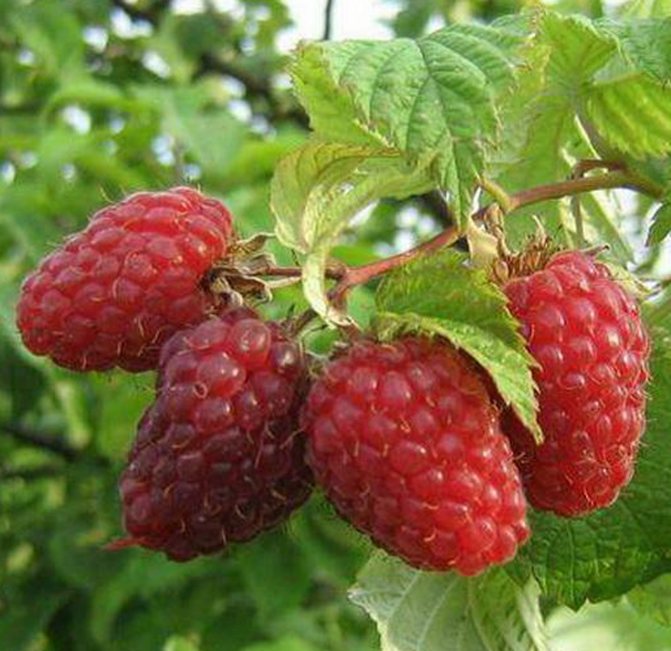

- Variety "Hercules" is characterized by powerful shoots and abundant branching. The height of the bush reaches 2 meters. Ruby-colored berries have the shape of a cone, the weight of one fruit ranges from 6 to 10 g. The variety tolerates high soil moisture well and is resistant to the development of putrefactive processes. Harvesting begins at the end of June and continues until the first frost.
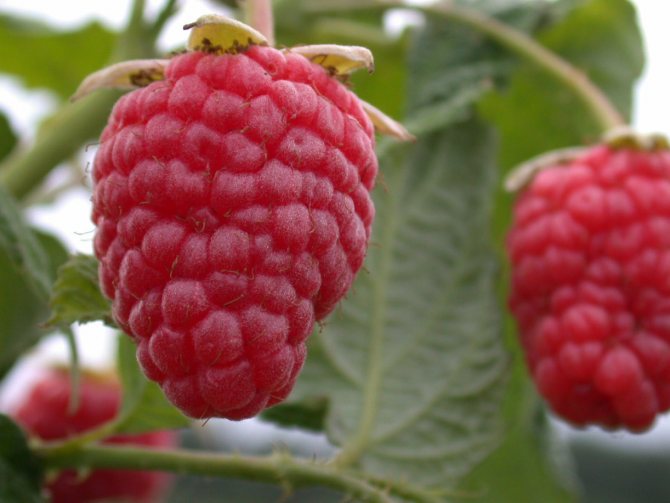

Repaired raspberries are resistant to diseases and pests and are unpretentious in the course. Peduncles are formed on one-year and two-year shoots, due to which the harvest takes place twice a season.
Repaired varieties practically do not give root growth, which complicates the reproduction process. The berries are large, fleshy, depending on the variety, they can have a sour taste.
"Bryanskoe miracle" is a sort of remontant raspberry, the height of the vine of which varies from 1.6 to 2 meters. Large berries weigh from 6 to 11 g, have a rich sweetish taste and delicate aroma. The variety is easy to propagate as it takes root well in its new location. "Divo" is highly valued for its taste and high yield. The shrub bears fruit before the first frost.


Standard varieties are also called raspberry tree. The shrub has thickened tree-like stems that allow the plant to be grown without being tied to trellises. The raspberry tree reaches 2 m in height and is distinguished by branching shoots. Depending on the variety, the weight of the fruit ranges from 4 to 18 g.
The "sturdy" variety belongs to the standard raspberry, has a high yield, resistance to fungal and viral diseases. The bright red berries have a conical shape with a blunt end and reach a weight of 7 to 9 g. The fruits are easily detached from the stalk, do not crumble when ripe. The variety is frost-resistant, can withstand temperatures up to -30 degrees. To increase yields, it is recommended to stimulate lateral branching by pinching the tops.
"Strong" resembles a real tree, does not need additional supports and does not bend under the influence of the wind and under the weight of the fruit due to strong wood.
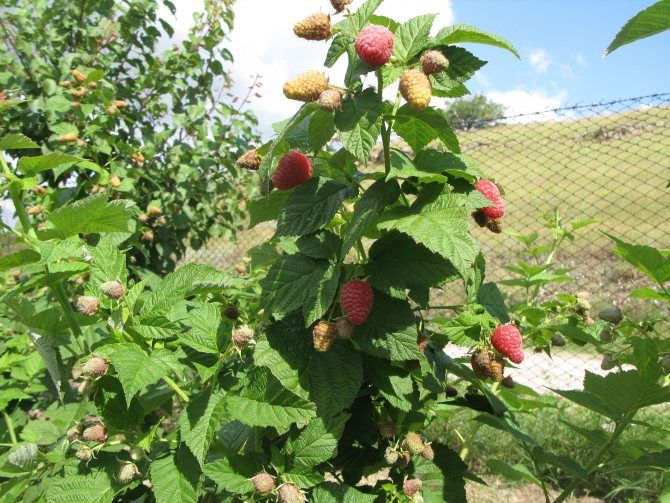

Common raspberry reaches a height of 2.5 m, has a well-developed root system and reproduces well. Small sweet and fragrant berries are densely arranged on the bush.Common raspberry varieties, for example, "garden", are unpretentious in care and tolerate frost well. The fruiting period begins in July and ends at the end of August.
Spring planting
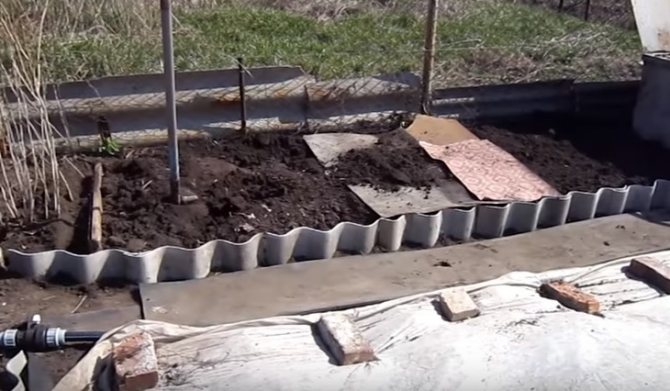

The preparation of the nutrient soil is carried out near the place where the raspberry tree was laid.
Preparation begins one and a half weeks before planting. To do this, prepare planting pits measuring 50 x 40 centimeters, while it is necessary to separate the upper ball of soil. The Zetas mix some of the soil with fertilizers. For this you will need:
- 10 kg of humus or compost;
- 50 g of medium acid potassium;
- 400 g of wood ash;
- 100 g of granular superphosphate.
All this is poured into the landing pit.
Landing dates
Experienced gardeners recommend planting raspberries in late fall or early spring. This is due to the fact that during this period there is no movement of the juice.
Important! It is better for residents of the northern region of the country to plant raspberries in early spring.
Garter
Raspberry shoots are quite high and can easily break, therefore the stems of single bushes are tied to a support - a peg.
If the plants are planted in a row, then trellises are made.
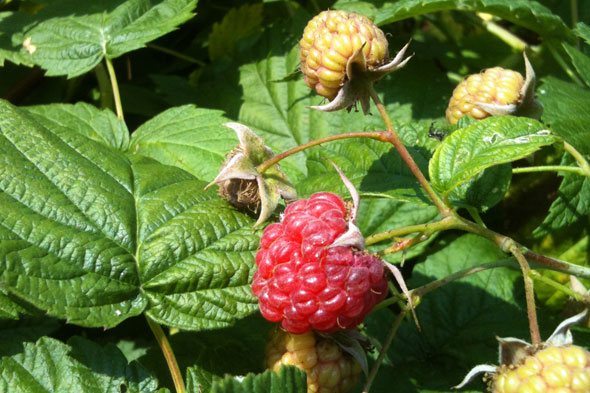

From the ends of the row in the center, stable posts are driven into the ground (made of wood, cutting a water pipe), which would be about 1.6 m high. Bars made of scrap materials are attached to them in the form of a letter "T" from above, similar bars are attached a little lower, at a height of about a meter and a string between them stretch a strong wire at a height of 1.6 m and 1.0 m. Tie the shoots of raspberries with a soft hemp rope on the "figure eight" (one loop around the plant, the other around the wire): to the lower wire - low plants, to the top - tall. When tying, distribute the plants evenly over the trellis so that they are blown by the wind and get enough sunlight. This will reduce the possibility of fungal infection.
In the fall, after the old, fruiting shoots have been pruned, young stems should be tied to trellises for the winter, but in bundles so that they do not break with snow. In the spring, distribute again one at a time in order to exclude the disease of gray rot.
In low places, where plantings often freeze slightly, it is recommended to bend the shoots to the ground before the onset of winter cold and tie them together at a height of 25-40 cm above the ground to ensure wintering under the snow cover. This method is also used for non-resistant raspberry varieties.
Distance between bushes
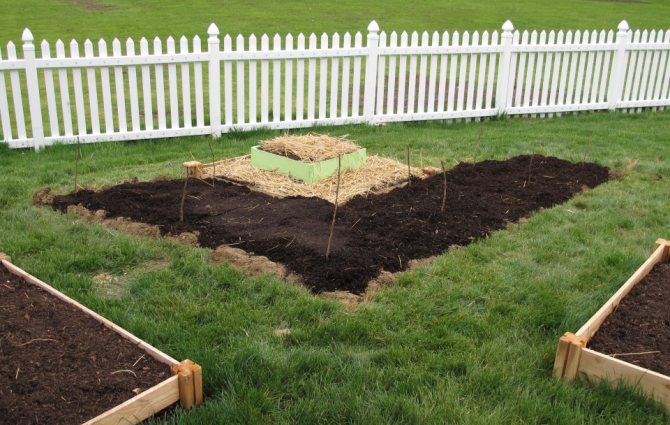

Correctly maintained distance between raspberry bushes will ensure the normal development of plants.
This is a very important point. If you plant raspberries without keeping the correct distance, the yield or the size of the berries may decrease.
During row planting, the distance between the bushes should be within 70-100 cm, and the row spacing should be at least 1.5 meters. An important point is not more than two seedlings are planted in one hole.
The ordinary method involves the preparation of a trench 30-50 cm wide. The rows should be at a distance of 1.5-2 meters from each other.
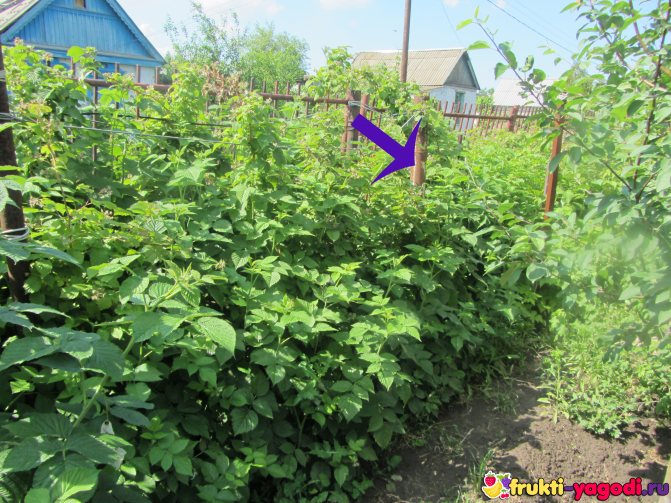

Our raspberries are a little overgrown, but the distance between the rows is visible!
According to many gardeners, it is this distance that is optimal for growing and comfortable caring for raspberries.
Preparation of seedlings
Before you start planting raspberries, you need to prepare the seedlings. The first step is to cut off any excess shoots. If you follow all the rules, the seedling should have one shoot 20 cm high. In the case when the roots are dry, they are soaked in water for 10 hours. Before planting, the root system should be dipped in the mullein solution.
How to grow: 5 tips from seasoned gardeners
On thematic forums, you can always find a lot of advice from gardeners on how to grow raspberries correctly. Some of them are worth paying attention to:
- To get a harvest throughout the summer, it is necessary to choose varieties of different ripening rates.Then you will be able to enjoy a delicious and sweet berry from June to the end of August.
- Do not use irrigation ditches during the flowering culture. This can kill the plant as it damages the flowers. As a result, the yield will be low.
- At the first signs of illness, modern means of treatment should be used. The use of folk methods will stretch the process, and therefore raspberries will not bear fruit so actively. If you use chemicals, then the result will not be long in coming.
- When harvesting, it is worth having a pair of garden shears with you. Having found diseased shoots, they must be removed immediately. The same is done with dry ones.
- Pruning and overgrowth must be carried out throughout the year. Otherwise, nutrients will go away for active growth, and almost nothing will be left for tying berries.
Thus, it is not difficult to grow raspberries. This is an unpretentious culture that bears fruit abundantly. Some bushes can be harvested up to 7 kg. But for this you need to create favorable conditions.
5 / 5 ( 1 voice)
Distance between bushes and rows


Raspberry planting scheme.
It should be noted that the technology depends on the method of planting raspberries.
Bush method consists of the following landing stages:
- Formation of holes.
- Then the seedlings are lowered into the hole and the roots are gently straightened and the hole is covered with soil.
- The distance between the bushes should be within 80 cm.
- Do not fully deepen the root collar into the ground. It should be about 5cm above ground level. Otherwise, there is a risk of root decay.
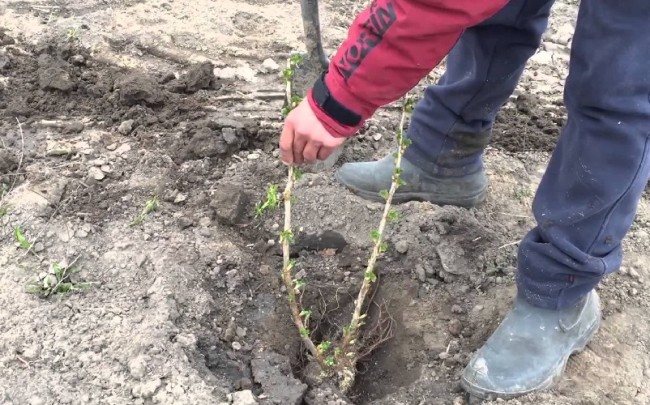

The diameter of the planting hole should be such that the roots of the seedlings are freely located in it and there is room for growth in the early years.
Private is considered the most convenient and correct way.... It is of two types, pit and trench. Pitting is that a separate hole must be dug for each bush, and long furrows are made during trench planting. Recently, more and more gardeners prefer trench planting of raspberries. Since the seedlings planted by this method receive the same amount of nutrients and thus give a much better yield. Trenches are dug three weeks before the bushes are planted in the ground.


Raspberry planting trench scheme.
The preparation process itself includes the following stages:
- Removing all weeds from the soil.
- To make the rows even and beautiful, you should first mark the area with stakes.
- Then a cord is pulled between the stakes.
- After that, trenches are dug, the depth of which should be 40-45 cm and width - 50–55 cm.
- Before placing seedlings in the furrows, you need to thoroughly fertilize the soil.
The very process of planting raspberry bushes in an ordinary way is identical with the bush.
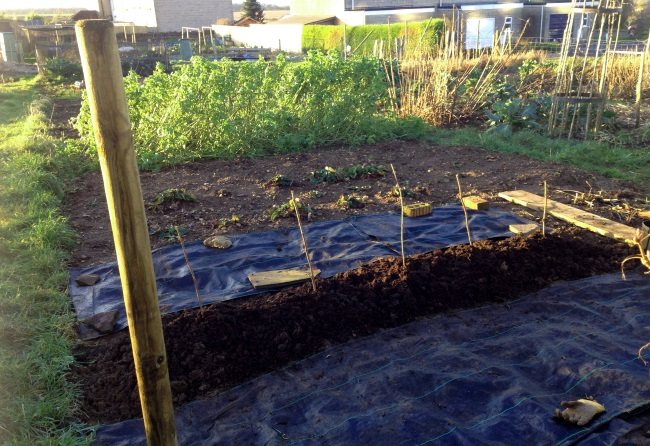

It will be easier and more convenient to care for raspberries planted in a row later.
Landing in containers
It is impossible not to note another less demanded method of planting raspberries as landing in containers.
It is suitable for those gardeners who have a small area. A plastic or metal bucket with a diameter of 50 centimeters serves as a container. The bottom of the container must be cut off, then placed completely in a previously dug hole. It is necessary to fill the bucket with soil mixed with manure. This method prevents sprouted reproduction.
After bush and ordinary planting, raspberries are watered abundantly. At least 10 liters of water are poured under each bush... To retain moisture and prevent weed growth, the soil around the bush is mulched with sawdust, humus, pine needles or straw.
It should be noted that raspberries can be grown not only with the help of seedlings, but also with replacement shoots, cuttings, offspring, dividing the bush.
Installing the trellis
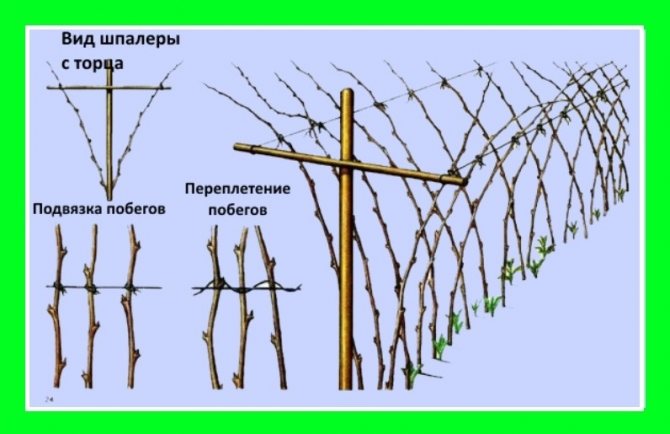

Trellis device for remontant raspberries.
It's no secret that every shrub needs good support and raspberries are no exception. Since during the ripening of the fruits, the branches become heavy and, under their weight, tilt low to the ground. To prevent this from happening during planting, you must install a trellis.
For this, a wooden post is installed at the beginning and end of the row. In the case when the rows are long, the distance between them should be 4 meters. A wire is pulled between them. The number of rows will increase every year. Then, using a rope or copper wire, you need to tie the shoot to the wire.
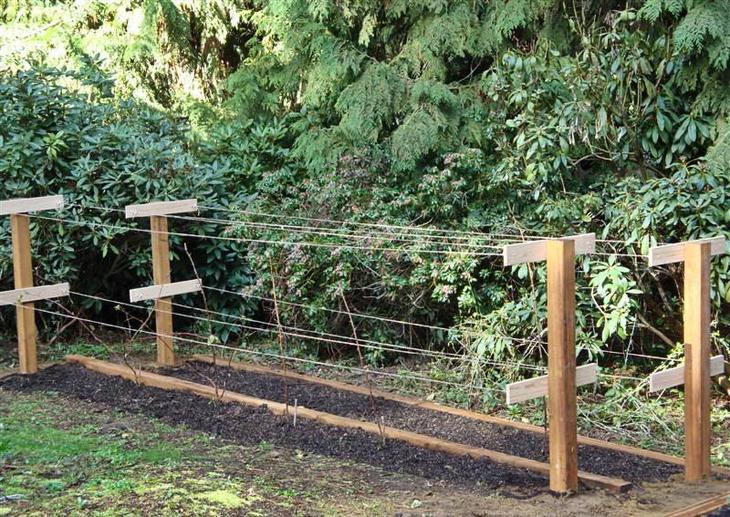

An example of making a simple trellis from beams and boards.
Reproduction
Raspberries reproduce by root suckers, parts of roots, less often by dividing rhizomes.
Each season, many shoots grow from the rhizomes of raspberries, which will bear fruit the next year. When laying a new raspberry tree in the summer, young shoots 15-20 cm long are dug away from the main bush, so as not to damage it, and planted for growing. By autumn, young plants will develop a strong root system and turn into good seedlings.
For propagation by root cuttings, roots with a diameter of at least 0.5 cm are cut into pieces about 20 cm long and planted in shallow pits for germination.
Site preparation
The preparation of the site for the berry must be carried out in advance. For this, predecessors are planted on it in advance in order to cleanse the land of weeds, improve the physical properties of the soil and saturate it with nutrients. For this reason, on the site of the future sowing of raspberries, vegetable crops are grown for two to three years, under which mineral organic fertilizers are additionally applied.
A few months before planting the berries, the previous crops are plowed by 40-45 cm. If it is planted in the fall, then during plowing, manure and mineral fertilizers are placed. After plowing, the soil is kept under "black steam", that is, in a loosened and weed-free state, which retains moisture.
Harvesting
The raspberry harvest is in July. If the weather is not hot, then some varieties bear fruit in August. Remontant raspberries can be enjoyed until the first snow.


For better transportation, picking berries is recommended with a stalk. Only harvest in dry weather when dew has subsided.
Care must be taken to ensure that the berries are firm, dry, healthy and do not exude juice. Collecting raspberries should be done immediately in the container (basket, plastic tray) in which they will be transported, otherwise the berries will be crumpled.
If the crop is processed on site, then the berries are harvested without twigs in a dry bowl.
Pruning
When planting a seedling in the fall, it is advisable to cut off the aerial part of the bush to prevent the spread of pests and diseases.
In the spring of the growing shoot of the second year, the top is cut off to the first well-formed bud, so that more lateral fruit branches are formed on the plant (i.e., the shoot is cut off 10-15 cm from the top).
Shoots of the second year (light brown with dried fruit twigs) are cut out after fruiting without leaving a hemp, and weak shoots of the first year up to 50-70 cm high are also removed. in August, but also valid in September-October.
Care
In the spring, fertilizing with organic fertilizers is required: 1 liter of mullein infusion per bucket of water for 1 running meter of the plantation or nitrogen fertilizers at the rate of 50-100 g per m² or 50 g per running meter. Top dressing is carried out after rain or watering, i.e. the ground should be moist so as not to burn the roots.
It is necessary to weed the plantings during the entire spring-summer season, because weeds do not allow young shoots of raspberries to develop normally, which will bear fruit the next year.
It is best to mulch the soil with coarse wood shavings, cut grass, peat or coarse scraps to make it easier to control weeds and retain moisture. Care should be taken to loosen the soil with a garden pitchfork. the root system is located at a shallow depth. After harvesting (July), it is advisable to re-feed the raspberry bushes with organic matter: 1 liter of mullein infusion per bucket of water for 1 running meter of the plantation.
In the fall, feed with phosphorus-potassium fertilizers, if the plantings are more than 2-3 years old at the rate of: 30 g of superphosphate + 15 g of potassium sulfate per 1 m² or 15 g of superphosphate + 10 g of potassium sulfate per 1 running meter.
Crop rotation
Different groups of plants will have different root systems. You cannot grow crops with the same root type in one place. This leads to depletion of the soil and reduced yields. And thanks to crop rotation, the absorption of nutrients from the soil is balanced.
When growing raspberries, the following rules should be considered:
- you can not plant it after a tomato, strawberry or potato;
- the neighborhood with the apple tree will help protect the berry from gray rot;
- in order to avoid excessive growth of the raspberry tree, you can plant a garden bed with sorrel nearby;
- after raspberries, it is recommended to plant rye or mustard in its place.
Then the condition of the soil will improve due to the increase in useful trace elements in it. And in a few years on this place it will be possible to make a raspberry plantation again.
Watering
In spring, in dry weather, before flowering, watering is required at the rate of 0.5 buckets of water for each plant. The water should not be very cold, it is better to let it settle. If the weather is warm, you can hose along the furrows, but not with a strong stream, otherwise the roots will be exposed.
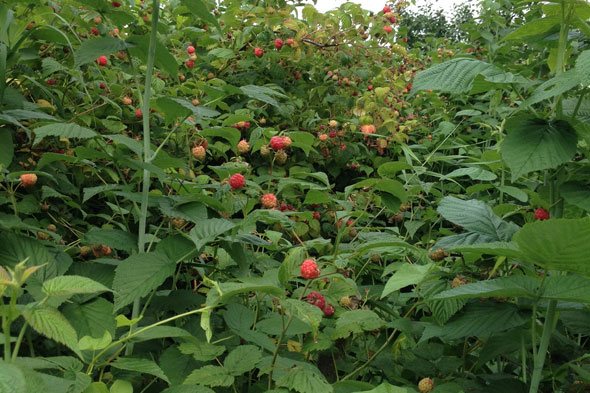

Raspberries love moisture, but do not tolerate stagnant water, so plants should be watered only if the ground is dry. Watering should be done in the evening so that the water and the earth are warmed up enough, this will avoid infection with fungal diseases.
When watering, the soil should be moistened to the depth of root growth, i.e. 30-35 cm.

